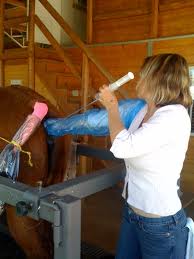Breeding
This is a critical question. Getting into crossbreeding requires a long term commitment, and before jumping into the unknown, one has to have a crystal clear answer.
INTRODUCTION
The quality of the semen is one of the factors most important in success of reproductive biotechnologies (artificial insemination, fixed time artificial insemination, embryonic transfer and in vitro fertilization). The level of dietary energy has been suggested as the main nutritional factor determining the effects on sperm quality.
This report contains market information collected by Stanton, Emms & Sia, some of which may be considered commercially confidential. The Government of Canada assumes no liability for the accuracy and reliability of the market information and intelligence provided herein.
The Jersey cow is a relatively small cow, bred around the world for use in the dairy industry. The Jersey is the second most popular breed of dairy cow in the world, behind only the Holstein. Jersey cows thrive in all climates and temperatures. Known for early maturity and easy calving, Jersey cows can have their first calves as early as 19 months old. Dairy farmers typically breed cows all year, using artificial insemination, to maintain milk production. Hobby farmers may choose to use a live bull instead.
The UK is fortunate to have many great breeds of dairy cow, and over the years these have been bred to suit the wide variety of management systems, climates and dairy products we enjoy in this country, said Peter Willies, Nocton Dairies Ltd, at the British Cattle Breeders Conference.
RobustMilk is a project that has been funded through the EU Framework 7 Programme to join together six world-leading research organisations within EU that are actively working in dairy cattle breeding and have strong links with the dairy industry. It is called Innovative and Practical Breeding Tools for Improved Dairy Products from More Robust Dairy Cattle abbreviated to RobustMilk for ease of use (and speed!), explained Roel Veerkamp, at the British Cattle Breeders Conference 2011.
Many dairy producers practice some crossbreeding, and the numbers increase every year. Motivating factors include a desire to improve fertility, survival, milk components, and calving ease. Some producers want cows smaller than mature Holsteins. Several large, long-term dairy crossbreeding experiments have been conducted in the United States in the past. Cows involved in previous projects were not the result of intensive selection programs for type and production that produced today’s purebred populations.

